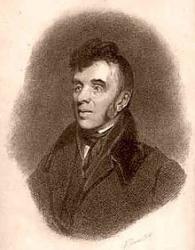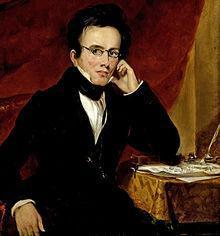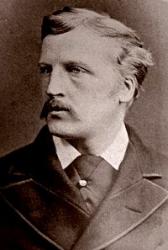Planning worship?
Check out our sister site, ZeteoSearch.org,
for 20+ additional resources related to your search.
- |
User Links
Person Results
‹ Return to hymnal






Export as CSV
Ebenezer Elliott

1781 - 1849 Person Name: Ebenezer Elliott, 1781-1849 Hymnal Number: 376 Author of "When wilt thou save the people?" in Hymns for the Living Age Elliott, Ebenezer, commonly known as the "Corn Law Rhymer," was born near Rotherham, Yorkshire, 1781, and died at Barnsley, in the same county, in 1849. The greater part of his life was spent in Sheffield, where he was engaged in the iron trade, and it was in a Sheffield newspaper that many of his poetical pieces first appeared.
He published:—
(1) Night, a Descriptive Poem, 1818. (2) The Village Patriarch, 1829. (3) Corn Law Rhymes, 1831. (4) Poems, 1834 ; and (5) More Prose and Verse, 1850.
A piece or two from these works have been adapted as hymns in some Unitarian Collections. They include "Another year is swallowed by the sea," for the old and new year.
-- John Julian, Dictionary of Hymnology (1907)
Ebenezer Elliott
M. E. Thalheimer
Person Name: Elsie Thalheimer Hymnal Number: 473 Author of "Thou art my Shepherd" in Hymns for the Living Age
M. E. Thalheimer
Thomas Arnold

1795 - 1842 Person Name: Friedrich R. L. von Canitz, 1654-1699 Hymnal Number: 23 Author of "Come, my soul, thou must be waking" in Hymns for the Living Age
Thomas Arnold
Robert Hall Baynes

1831 - 1895 Person Name: Robert H. Baynes Hymnal Number: 457 Author of "Jesus, to thy table led" in Hymns for the Living Age Baynes, Robert Hall, M.A., s. of the Rev. Joseph Baynes, b. at Wellington, Somerset, Mar. 10, 1831, and educated at St. Edmund Hall, Oxford, graduating B.A. 1856, and M.A. 1859. Ordained in 1855, he held successively the Curacy of Christ Church, Blackfriars, the P. Curacy of St. Paul's, Whitechapel; of Holy Trinity, Maidstone, and of St. Michael's, Coventry. In 1870 he was Bp. designate of Madagascar; but resigned in 1871. In 1873 he was appointed Hon. Canon of Worcester Cathedral, and in 1880 Vicar of Holy Trinity, Folkestone. Canon Baynes is more widely known as the compiler of some most successful books of sacred poetry than as an original hymn-writer, although some of his hymns are of considerable merit, and are in extensive use. Of these the best known are “Jesu, to Thy table led," and "Holy Spirit, Lord of glory." He was editor of Lyra Anglicana, 1862; English Lyrics, 1865; The Canterbury Hymnal, 1864 ; and the Supp. Hymnal, 1869 (all pub. Lond., Houlston & Wright); The Illustrated Book of Sacred Poems, Lond., Cassell & Co., and is the author of original Autumn Memories and other Verses, Lond., Houlston & Wright, 1869. His hymns appeared in The Canterbury Hymnal, the Autumn Memories, and in the Churchman’s Shilling Magazine, of which he was sometime editor. His Home Songs for Quiet Hours were pub. in 1878, and Hymns for Home Mission Services in the Church of England, 1879. To his eucharistic manual, At the Communion Time, a series of hymns for Holy Communion are added. D. March 12, 1895.
-John Julian, Dictionary of Hymnology (1907)
====================
Baynes, R. H., p. 119, i. Other hymns in common use are:—
i. In his Canterbury Hymnal, 1863.
1. Bend every knee at Jesus' name. Missions.
ii. In Mrs. Brock's Children's Hymn Book, 1881.
2. God Almighty, in Thy temple. Holy Trinity. This begins in his Hymns & Other Verses, 1887, "God Almighty, Heavenly Father."
3. Lord Jesu! on our forehead. Confirmation.
4. 'Neath the stars which shone so bright. Christmas Carol.
5. No room within the dwelling. Christmas.
6. O Man of Sorrows, Who didst die to save. Death and Burial.
iii. In A. J. Soden's Universal Hymn Book, 1885.
7. Great Shepherd of Thy ransomed flock. Holy Communion.
8. Jesu, Thou true and living Bread. Holy Communion.
9. The day is done; beside the sultry shore. Evening. Eternity.
Of these hymns, Nos. 2, 4, 5, 7, 8, 9, are in Canon Baynes's Hymns and Other Verses, 1887. There are also others in the same work which are worthy of notice, especially one for a Flower Service, written in 1885, “Lord Jesu! we adore Thee."
--John Julian, Dictionary of Hymnology, Appendix, Part II (1907)
Robert Hall Baynes
John Goss

1800 - 1880 Hymnal Number: 73 Composer of "BENEDIC ANIMA" in Hymns for the Living Age John Goss (b. Fareham, Hampshire, England, 1800; d. London, England, 1880). As a boy Goss was a chorister at the Chapel Royal and later sang in the opera chorus of the Covent Garden Theater. He was a professor of music at the Royal Academy of Music (1827-1874) and organist of St. Paul Cathedral, London (1838-1872); in both positions he exerted significant influence on the reform of British cathedral music. Goss published Parochial Psalmody (1826) and Chants, Ancient and Modern (1841); he edited William Mercer's Church Psalter and Hymn Book (1854). With James Turle he published a two-volume collection of anthems and Anglican service music (1854).
Bert Polman
John Goss
Felix Mendelssohn-Bartholdy

1809 - 1847 Person Name: Mendelssohn Hymnal Number: 114 Composer of "MENDELSSOHN" in Hymns for the Living Age Felix Mendelssohn-Bartholdy (b. Hamburg, Germany, 1809; d. Leipzig, Germany, 1847) was the son of banker Abraham Mendelssohn and the grandson of philosopher Moses Mendelssohn. His Jewish family became Christian and took the Bartholdy name (name of the estate of Mendelssohn's uncle) when baptized into the Lutheran church. The children all received an excellent musical education. Mendelssohn had his first public performance at the age of nine and by the age of sixteen had written several symphonies. Profoundly influenced by J. S. Bach's music, he conducted a performance of the St. Matthew Passion in 1829 (at age 20!) – the first performance since Bach's death, thus reintroducing Bach to the world. Mendelssohn organized the Domchor in Berlin and founded the Leipzig Conservatory of Music in 1843. Traveling widely, he not only became familiar with various styles of music but also became well known himself in countries other than Germany, especially in England. He left a rich treasury of music: organ and piano works, overtures and incidental music, oratorios (including St. Paul or Elijah and choral works, and symphonies. He harmonized a number of hymn tunes himself, but hymnbook editors also arranged some of his other tunes into hymn tunes.
Bert Polman
Felix Mendelssohn-Bartholdy
Hugh Hartshorne
Hymnal Number: 98 Alterer of "Come, ye thankful people, come" in Hymns for the Living Age
Hugh Hartshorne
George T. Coster
1835 - 1912 Hymnal Number: 363 Author of "March on, O soul, with strength" in Hymns for the Living Age Coster, George Thomas, was born in 1835 at Chatham, Kent; studied for the Congregational Ministry at New College, London; ordained in 1859 at Newport, Essex, and has since held pastorates at Barnstaple, Hull, South Norwood, and Whitby. He has published (besides many sermons and tracts) Pastors and People, 1869; Allegories, 1878; Lorrin and other Poems, 1859; the Rhyme of St. Peter's Fall, 1871, and Poems and Hymns, 1882. He has also contributed several poems on Scripture characters (a line in which he excels) to The Poet's Bible, and edited, in 1869 Temperance Melodies and Religious Hymns. Of his hymns the following are in common use:—
1. Dost thou bow beneath the burthen. Fellowship with God. This is an imitation of Dr. Neale's "Art thou weary." It is No. 1112 in the 1880 Supplement to the Baptist Psalms and Hymns.
2. From north and south and east and west. Missions.
3. Lord of the sea! afar from land. Sabbath at Sea. Nos. 2 and 3 are in Horder's Congregational Hymns, 1884. [Rev. W. Garrett Horder]
--John Julian, Dictionary of Hymnology (1907)
===============
Coster, G. T., p. 263, i. The following hymns by Mr. Coster have been written and have come into common use since 1892:—
1. Going to the Father. [The Man of Sorrows.] Written in 1899, and published in his Hessle Hymns, 1901, No. 13, in 5 stanzas of 8 lines.
2. Lord God Almighty, in Thy hand. [Praise.] Written in 1897, and published in his Hessle Hymns, 1901, No. 3, in 7 stanzas of 4 lines, and entitled "We praise Thy power."
3. Lord of the gracious sunshine. [Temperance.] Written at the request of the Rev. W. G. Horder for his Hymns Supplemental on Oct. 51893. It is in extensive use in Great Britain and America. In the author'sHessle Hymns, 1901, No. 30, and entitled "A National Foe."
4. March on, 0 Soul, with strength. [Christian Battle Song.] Written in Bedford Park, London, Aug. 3, 1897, and printed in The Evangelical Magazine, Feb., 1898. In the Hessle Hymns, 1901, No. 29, in 6 stanzas of 6 lines, and headed "Battle Song." It is in common use in America, including The Pilgrim Hymnal, 1904, and others.
5. O Friend Divine! with Thee apart. [Fellowship with Christ.] First published in the Evangelical Magazine, Sept., 1900; also in his Hessle Hymns, 1901 No. 25, in 6 stanzas of 4 lines. Included in The Pilgrim Hymnal, 1904.
6. Skill and beauty from Thee live. [Opening of a Sale of Work.] First published in his Hymns and Poems, 1882, and again in his Hessle Hymns, 1901, No. 33, in 3 stanzas of 4 lines.
7. Thou Whose great baptismal hour. [Holy Baptism.] Written in 1892, at the request of W. G. Horder, for the Baptist edition of his Worship Song, and given therein 1895, No. 697; also in the Baptist Church Hymnal, 1900, No. 504, and the author's Hessle Hymns, 1901, No. 19.
8. We join with all in every place. [Holy Communion.] Written in 1891, and first published in Border's Hymns Supplemental, 1894, and the Hessle Hymns, 1901, No. 20, in 3 stanzas of 6 lines, and entitled “United Communion Service."
In addition to the above the following hymns are appearing in forthcoming collections:—
9. Comrades' names are on our banner. [National Hymn] Written at Scarborough, July, 1901, and printed in The Examiner (the weekly organ of the Congregational Churches), May 8, 1902; also in the author's When the Stars Appear, 1903, p. 11, in 6 stanzas of 6 lines, and entitled "Names on Our Banner."
10. King of the City Splendid. [National Hymn) Written at Bedford Park, London, Aug. 18, 1897, and printed in The Independent (Congregational weekly), Jan. 27, 1898. In his Hessle Hymns, 1901, No. 40, in 10 stanzas of 6 lines, and entitled "Prayer for our Cities."
Concerning the three hymns noted on p. 263, i., the author says :—
1. Dost thou bow beneath the burden! "It was
written in 1879, and first printed in the Evangelical Magazine, May, 1879." In the Hessle Hymns, 1901, No. 22.
2. From north and south, and east and west. "Originally written in 1864, and first printed in the Evangelical Magazine. In later collections it haft been considerably altered" In its varying forms it is the most widely known of the author's hymns. Authorised text in Hessle Hymns, 1901, No. 26.
3. Lord of the Sea, afar from land. "Written in 1874, and printed in The Christian World magazine, 1879." Included in Hessle Hymns, 1901, No. 31.
Since 1890 Mr. Coster has held the pastorates of Stroud and of Hessle, near Hull. He retired from the active ministry in 1902. His later poetical works include Collected Poems, 1890; Gloria Christi, 189G; Hessle Hymns, 1901; When the Stars appear, 1903; and Beams of Christ's Glory, 1904. In these works Mr. Coster has maintained his reputation as a writer of hymns.
--John Julian, Dictionary of Hymnology, New Supplement (1907)
George T. Coster
William H. Callcott
1807 - 1882 Hymnal Number: 221 Composer of "INTERCESSION, NEW" in Hymns for the Living Age CALLCOTT, WILLIAM HUTCHINS (1807–1882), musical composer, a younger son of Dr. John Wall Callcott [q. v.], was born at Kensington in 1807. As a child he received some instruction from his father, and later continued his studies under his brother-in-law, William Horsley. On 4 July 1830 he was elected a member of the Royal Society of Musicians. In 1836 he published an abridgment of his father's ‘Grammar,’ in 1840 a collection of psalm and hymn tunes for Bickersteth's ‘Christian Psalmody,’ and in 1843 ‘The Child's own Singing Book.’ In the latter work he was assisted by his wife Maria, who was the authoress of several unimportant religious stories, &c. In 1851 Callcott published ‘Remarks on the Royal Albert Piano’ (exhibited at the International Exhibition), and in 1859 ‘A few Facts on the Life of Handel.’ Callcott was for some years organist of Ely Place Chapel. In the latter part of his life he suffered much from ill-health. He died at 1 Campden House Road, Kensington, on 5 Aug. 1882, and was buried on the 9th at Kensal Green. Callcott composed several songs, glees, and anthems, but his name is principally known by his arrangements and transcriptions for the piano, which amount to many hundred pieces. A son of his, Robert Stuart Callcott, who showed great promise as an organist and musician, died in the spring of 1886 at an early age.
--en.wikisource.org/wiki/
William H. Callcott
John Douglas Sutherland Campbell, Duke of Argyll

1845 - 1914 Person Name: John, Duke of Argyll Hymnal Number: 238 Author of "Unto the hills around do I lift up" in Hymns for the Living Age John George Henry Douglas Sutherland Campbell LLD [Duke of Argyll] United Kingdom 1845-1914. Born in London to George Campbell, Marques of Lorne, and styled Earl of Campbell from birth, he assumed his father's title at the age of 21 months, when his father became 8th Duke of Argyll. He bore that title until age 54. Educated at Edinburgh, Eton College, St. Andrews and at Trinity College, Cambridge, he also went to the National Art Training School. He traveled widely for 10 years throughout North and Central America, writing literature and poetry. In the UK, from 1868, he represented the constituency of Argyllshire as a Liberal member of Parliament in the House of Commons. He made little impression there. He was appointed Lt. Col. Commandant of the 1st Argyll & Bute Artillary Volunteers. He married Queen Victoria's 4th daughter, Princess Louise. They shared interest for art, but the marriage was childless and unhappy, and they spent much time apart.
At 33, he was appointed Governor General of Canada. He and Louise made many contributions to Canadian society, especially in the arts and sciences. They encouraged establishment of the Royal Society of Canada, the Royal Canadian Academy of Arts, and the National Gallery of Canada, even selecting some of its paintings. Campbell was also involved in completion of the Canadain Pacific Railway and a hospital in British Columbia. He and his wife held lavish parties while in Canada. In 1881, Louise returned to England, and the Lord also in 1883, when he published his memoirs of Canada and Scotland. He was Governor and Constable of Windsor Castle from 1892 to 1914. He died of pneumonia in 1914. He received 4 Knightings and 4 special honors for his accomplishments. Towns, buildings, streets and parks were named for him.
John Perry
John Douglas Sutherland Campbell, Duke of Argyll


 My Starred Hymns
My Starred Hymns


